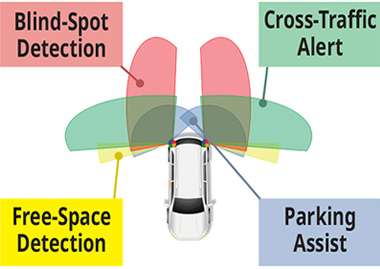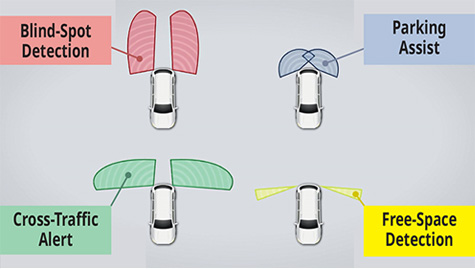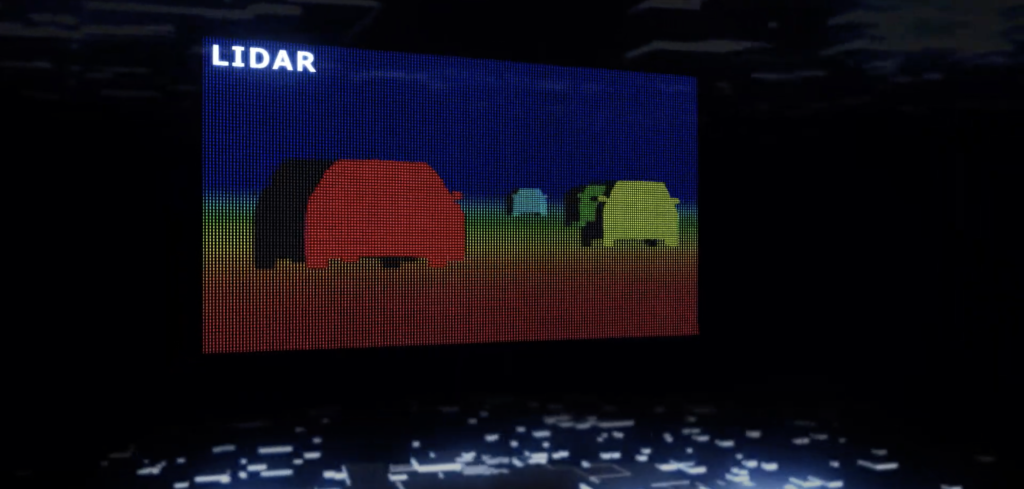Kyocera Corporation has announced a portfolio of products currently under development for use in ADAS applications. The company claims it is developing new solutions that apply convergence, miniaturization and solid-state conversion for multifunctional sensors, with the potential to simplify ADAS design and help contain processing requirements.
First up is a camera-lidar fusion sensor, claimed to be a world first, which integrates both technologies into a single unit sharing the same lens. Because both devices use a common lens, the camera and lidar signals have identical optical axes, which Kyocera says results in high-resolution 3D images with no parallax deviation.
Furthermore, while other lidar systems use a motor to rotate a mirror continuously as they scan an image, such an approach can be a source of failure because mechanical assemblies introduce reliability issues due to shock and vibration experienced while driving. To eliminate this issue, Kyocera says it has developed a solid-state solution using a micro-electromechanical system (MEMS) mirror that eliminates the conventional rotating assembly, based on advanced ceramic technology Kyocera developed as a world leader in ceramic semiconductor packaging.
The fusion sensor is currently under development and targeted for release by March 2025.
The company has also developed a millimeter-wave radar, operating in the 79GHz band, with considerable efforts made to miniaturize the antenna volume and area, resulting in a compact module form factor measuring just 48 × 59 × 21mm. Kyocera claims the radar is capable of distance measurements accurate to within 5cm.
The system also supports multi-function radar applications, and can independently set multiple detection modes with different detection distances and directions. The company notes that conventional millimeter-wave radar senses the same spot at regular intervals (for example, 50ms, 100ms, etc). In contrast, Kyocera’s high-speed switching allows for simultaneous sensing of multiple areas. As a result, a single module can offer blind-spot detection, free-space detection and/or other sensing functions simultaneously. This means the total number of radar sensors in a system can be reduced, contributing to lower cost and simpler design. In principle, modules providing three different sensing functions could allow a system of 12 single-function sensors to be replaced with a future system of just four multifunctional modules.
The radar also takes advantage of ‘adaptive-array’ antenna technology, which the company developed for commercial telecommunications network infrastructure. This beamforming transmit and receive technology allows fast and accurate estimation of the receive angle of multiple signals, and arbitrary setting of both transmit and receive timing. As a result, the company claims that mutual interference with other millimeter-wave radar signals can be reduced or eliminated.




